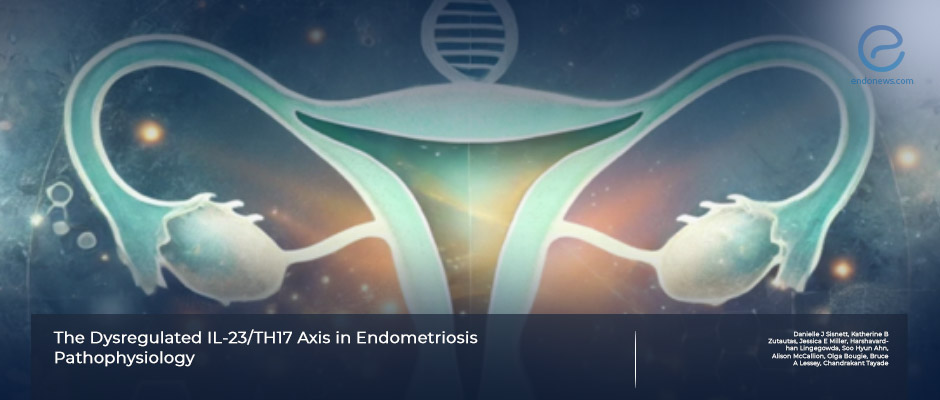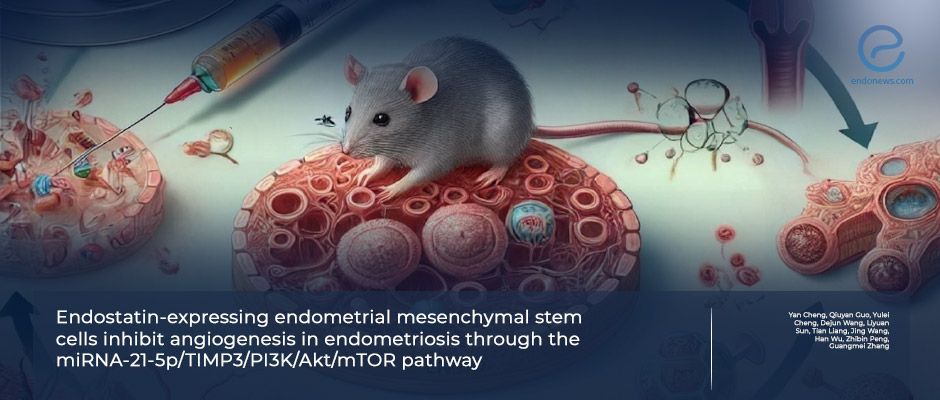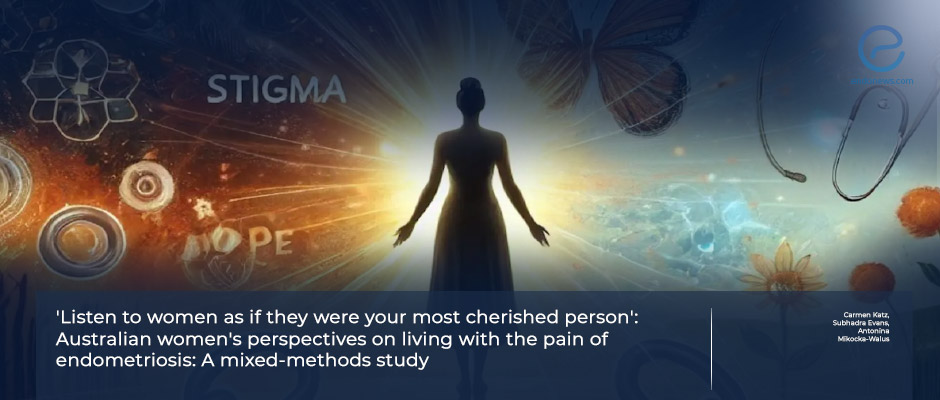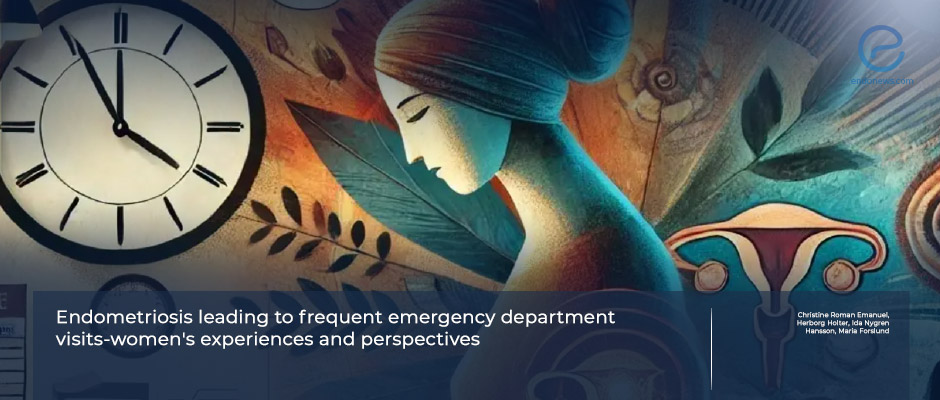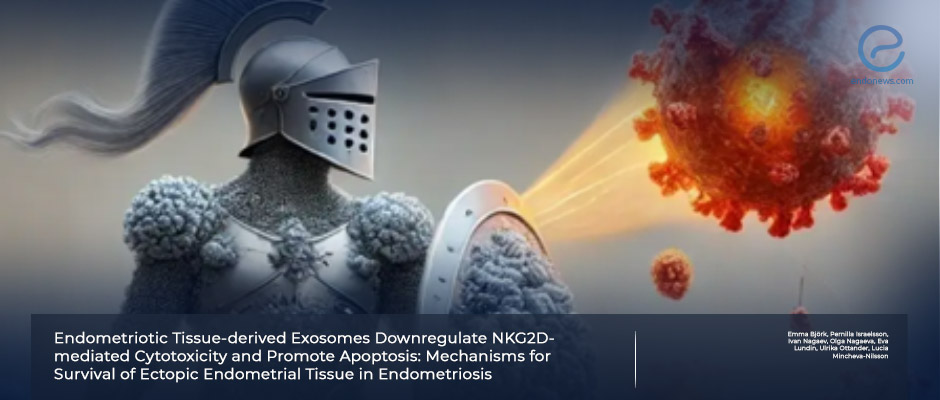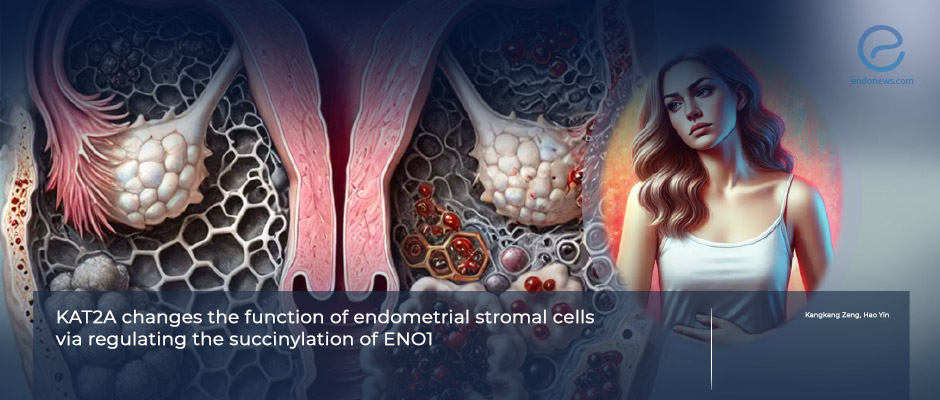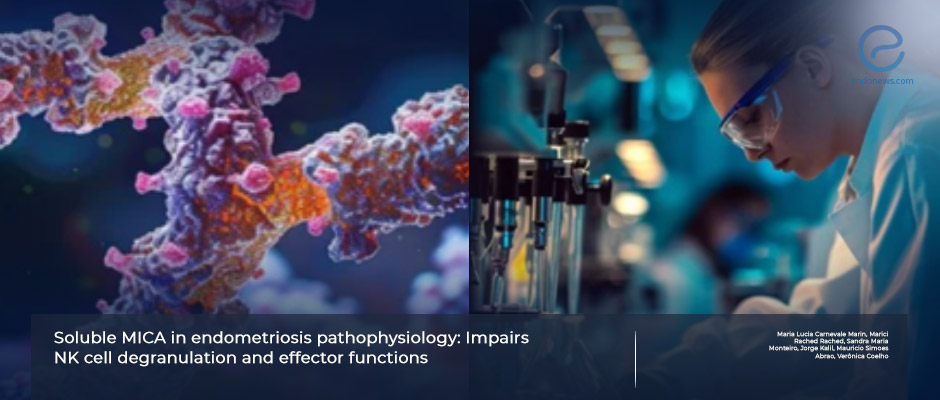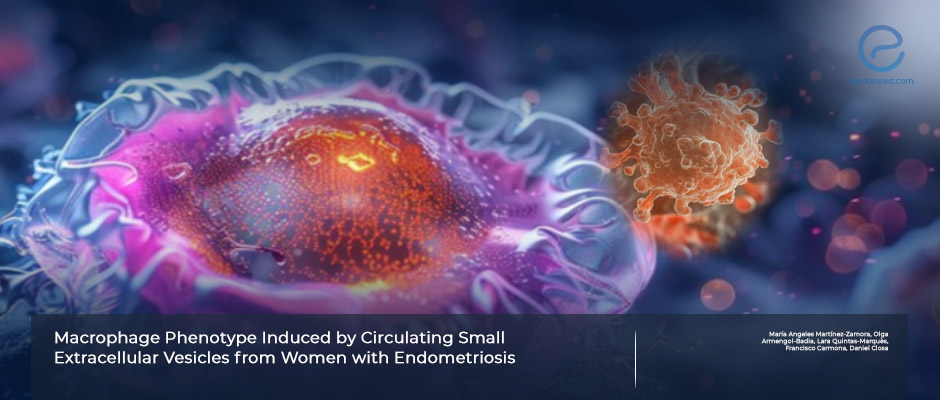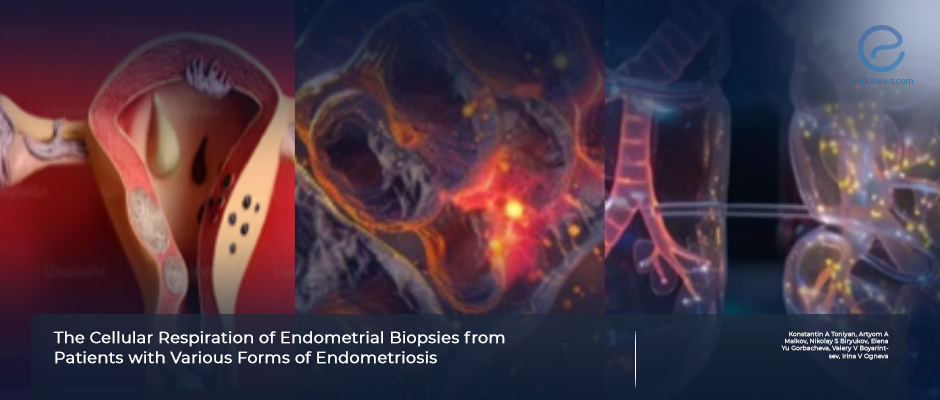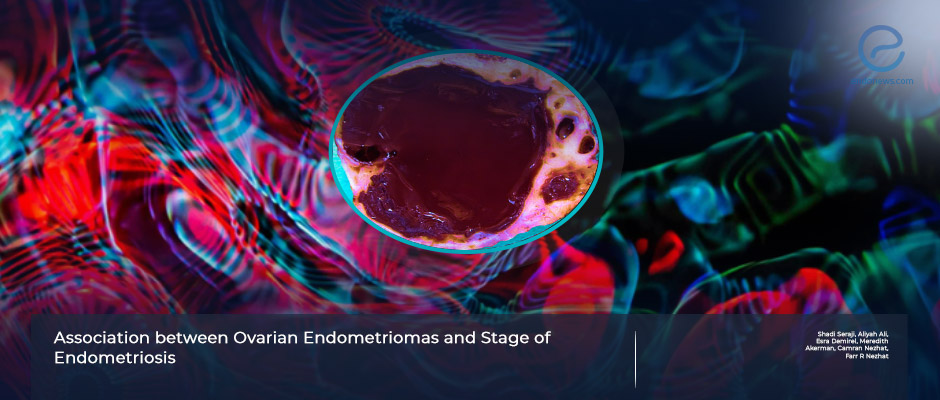 Hakan Kula, MD
Hakan Kula, MD
Dr. Ali Hakan Kula is a board-certified obstetrics and gynecology specialist from Turkey with a strong focus on endometriosis. He completed his residency at Dokuz Eylul University in the Department of Obstetrics and Gynecology, where he gained significant clinical and academic expertise. Dr. Kula resigned from the university in August 2024 after completing his residency and now focus on an endometriosis and female reproductive health researches.
He is involved in ongoing studies on endometriosis, including its surgical management and broader impacts, and is designing new research projects in collaboration with his colleagues. Dr. Kula is dedicated to advancing endometriosis care, sharing surgical knowledge, and raising awareness about women's health issues.
The Dysregulated IL-23/TH17 Axis in Endometriosis Pathophysiology
In a study published in the Journal of Immunology, Sisnett et al. explored the therapeutic potential of endometriosis with IL-23/TH17/IL-17 axis with structured into three main investigative components: human sample analysis, in vitro cell culture experiments, and an in vivo mouse model of endometriosis. The study demonstrates that IL-23 is a key driver of immune dysregulation in endometriosis, promoting pathogenic TH17 cell differentiation, immune cell recruitment, and inflammation in the lesion microenvironment. Despite these findings, the exact mechanistic link between IL-23 and endometriosis progression remains to be fully elucidated. Future research…
Key Points Lay SummaryEndostatin-Expressing Stem Cells: A New Approach to Treating Endometriosis
Endometriosis is a chronic inflammatory condition characterized by abnormal blood vessel formation. Endostatin, a potent angiogenesis inhibitor, has shown potential in targeting the process of angiogenesis. In a study published in Stem Cells Translational Medicine, Peng and Zhang et al. explored the therapeutic potential of genetically engineered endometrial mesenchymal stem cells (EMSCs-Endo) designed to express endostatin. The study revealed that EMSCs-Endo effectively homed to endometriotic lesions and locally released endostatin, resulting in a significant reduction in blood vessel formation and endometriotic lesion size…
Key Points Lay SummaryListening to Australian Women: The Personal Impact of Endometriosis Pain
In a study published in Journal of Health Psychology, Katz et al. investigated the perspectives of Australian women with endometriosis, evaluating their experiences of pain, stigma, healthcare, and the biopsychosocial factors influencing their quality of life. Endometriosis affects millions of women worldwide, causing debilitating pain, fatigue, and significant impacts on emotional well-being. This study explored the perspectives of women living with endometriosis and highlighted the challenges they face. Many participants described feeling dismissed and stigmatized, especially regarding their menstrual pain, which is often…
Key Points Lay SummaryEndometriosis-Related Emergency Department Visits: Frequency and Implications
In a study published in the PlosOne, Emanuel et al. investigated how to describe experiences and expectations related to repeated gynaecological emergency visits among women with endometriosis. This qualitative study was conducted at a Gnecologic energency department in a Swedish university hospital between October 2022 and January 2023. The research focused on understanding the experiences and expectations of women with endometriosis who frequently visited the emergency. The study identified two primary themes: "Living with Pain" and "Patients’ Needs When Seeking gynecologic emergency department." These themes included…
Key Points Lay SummaryEndometriotic Exosomes Suppress Immune Defense and Promote Ectopic Tissue Survival
In a study published in the Journal of Immunology, Björk et. al investigated how NKG2D-mediated cytotoxicity affects the function of endometrios cells enviroment in endometriosis, highlighting its role in disease progression and its potential as a target for therapeutic intervention. This study explores the role of exosomes secreted by endometriotic tissue in impairing immune surveillance, providing a novel mechanistic insight into the pathogenesis of endometriosis. The research focuses on two key immunosuppressive pathways mediated by these exosomes: Downregulation of the NKG2D receptor on natural killer (NK) cells. Induction of…
Key Points Lay SummaryEndometrial Stromal Cell Function: The role of Histone acetyltransferase and Alpha-Enolase
In a study published in the Open Life Sciences, Yin et. al investigated how KAT2A-driven ENO1 succinylation affects the function of endometrial stromal cells in endometriosis, highlighting its role in disease progression and its potential as a target for therapeutic intervention. The study highlights the pivotal role of KAT2A-mediated succinylation of ENO1 in the progression of endometriosis. KAT2A ia also called lysine acetyltransferase 2A, is a transcriptional activator and also has role on stem cell renewal. Enolase-1(ENO1) is a glycolytic enzyme that plays role…
Key Points Lay SummaryImmune Dynamics in Adolescent Peritoneal Endometriosis
In a study published in the Cells, Khashchenko et. al investigated the potential role of immune cell imbalances in adolescent peritoneal endometriosis, and their potential impact on disease progression and response to progestogen therapy. This study provides new insights into how immune imbalances in adolescents with PE may be linked to disease symptoms and development. By analyzing immune cell profiles in 50 adolescent girls with PE and comparing them to those without, researchers found that inflammatory immune cells, especially CD86+ monocytes, were elevated in the PE group and…
Key Points Lay SummaryDietary Zinc Intake and Endometriosis Risk in American Women
In a study published in the BMC Public Health, Xie et al. investigated the potential effect of zinc intake and the prevalence of endometriosis with a cross-sectional study. The findings revealed a significant positive association between higher dietary zinc intake and endometriosis prevalence, particularly among women consuming more than 14 mg/day of zinc. Sensitivity analyses upheld these results, demonstrating that the association remained consistent across subgroups defined by demographic and lifestyle variables. This robust association underscores zinc's potential role in immune modulation and oxidative stress…
Key Points Lay SummaryA Key Modulator of Natural Killer Cell Dysfunction in Endometriosis: Soluble MICA
In a study published in the American Journal of the Reproductive Immunology, Abrao et al. investigated the potential effect of MHC Class I related MICA molecules at the pathogenesis of the endometriosis. This study highlights a novel role of soluble MICA (sMICA) in endometriosis, showing its contribution to NK cell dysfunction and impaired immune response. Women with endometriosis exhibited elevated levels of sMICA, especially in advanced disease stages, correlating with reduced NK cell cytotoxicity and IFN-γ expression. This suppression of NK function likely contributes to…
Key Points Lay SummaryMetabolic and Cellular Changes in Adolescent Peritoneal Endometriosis
In a study published in the International Journal of Molecular Sciences, Khashchenko et al. explored the association of cellular and exosomal markers of glycolysis, mitochondrial biogenesis, apoptosis, autophagy, and estrogen signaling in peritoneal endometriosis among adolescents to understand early disease-related metabolic reprogramming. This case–control study focused on adolescent girls aged 13–17 and total of 60 participants were included: 45 with laparoscopically confirmed peritoneal endometriosis and 15 with paramesonephric cysts as controls. Samples of peripheral blood, peritoneal fluid, endometrioid foci, and normal peritoneum were collected.…
Key Points Lay SummaryMacrophage Phenotypes Induced by Circulating Extracellular Vesicles in Endometriosis
In a study published in the Biomolecules, Martínez-Zamora et al. investigated the potential effect of circulating sEVs in the plasma of well-characterized patients with endometriosis on macrophage phenotype. This study explores how sEVs, which are tiny particles found in the blood of women with endometriosis, might influence immune cells called macrophages. These immune cells can adopt different roles, and in endometriosis, they often shift to a type that helps the disease progression. They studied the effects of these sEVs on macrophages, using human THP-1…
Key Points Lay SummaryMitochondrial Respiratory Chain in Endometriosis of Various Locations
In a study published in the International Journal of Molecular Sciences, Ogneva et al. investigated the final stage of energy production in cellular metabolism—specifically, the rate of oxygen absorption during oxidative phosphorylation—in endometrial biopsies from patients without endometriosis and those with endometriosis in various localizations. This study aimed to explore how cells in endometriosis lesions produce energy, comparing different types of endometriosis, including adenomyosis and endometriomas. Researchers analyzed how well these cells absorb oxygen during energy production at oxidative phosphorylation…
Key Points Lay SummaryUnviling the role of PD-1-PD-L1 Pathway in Endometriosis Progression and Therapy
The role of immune system in Endometriosis, a chronic inflammatory disease is complex, involving both protective and harmful effects. A key player in this process is PD-1 (programmed cell death protein 1), a protein found on T cells that regulates immune responses by inhibiting T and B lymphocyte activity when it binds to its ligand, PD-L1. Increased levels of PD-1 and PD-L1 can lead to immune evasion, reducing the effectiveness of the immune system in eliminating ectopic tissue. However, the exact mechanisms behind this…
Key Points Lay SummaryIntrinsic Potential Factors in Retrograde Menstruation
The mechanistic model of endometriosis pathogenesis suggests that anatomical factors promoting retrograde menstruation are crucial and biologically sound. This model is supported by the strong link between obstructive Müllerian anomalies and endometriosis, indicating a causal relationship between the amount of refluxed blood and the development of the condition. However, despite extensive debate and research, evidence supporting this model is limited, often of low quality, and primarily from cross-sectional studies that cannot establish causality. Furthermore, evidence against this model appears to be…
Key Points Lay SummarySleep Disorders and Endometriosis
A new study published in the European Journal of Obstetrics & Gynecology and Reproductive Biology by a team lead by Bruno et al., reveals that endometriosis is associated with decreased sleep quality and hyperarousal. Endometriosis is a chronic condition affecting millions of women, often causing severe pain, heavy menstrual bleeding, and infertility. In addition to these symptoms, it has a significant impact on quality of life, with many women experiencing increased levels of anxiety, depression, and sleep disturbances. Poor sleep can disrupt daily functioning, affecting…
Key Points Lay SummaryEndometriomas and the Severity of Endometriosis
A new study published in the Journal of Clinical Medicine by Dr.Nezhad's group reveals that endometriomas, a form of deeply infiltrating endometriosis, are strongly associated with advanced stages of the disease. The authors investigated how the presence of endometriomas—whether on one side or both—correlates with more advanced stages of the disease, and how detecting these cysts before surgery can aid in planning, improve patient advice, and handle complex cases, especially those involving fertility. Medical records from 222 patients who had surgery for endometriosis between…
Key Points Lay Summary